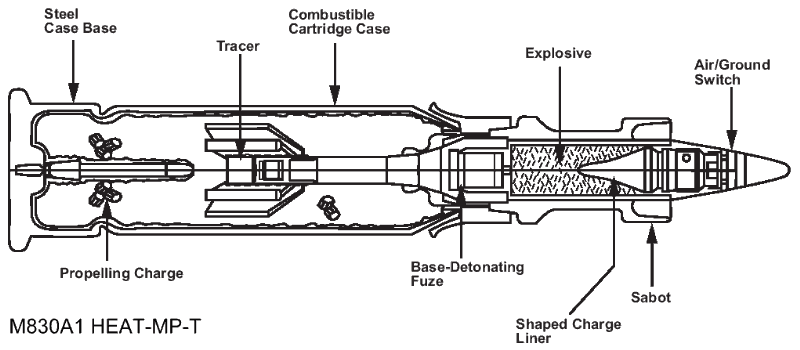 Loganauer, on 20 August 2014 - 06:53 PM, said:
Loganauer, on 20 August 2014 - 06:53 PM, said:
The point was that your opening statement was wrong. The justification for minimum range is largely that an autocannon is a -cannon- and operates similarly to a tank. It arcs. Which makes it unusable in close ranges. There was a logical reason why these weapons had a minimum range in the tabletop, and we use almost identical stats to the tabletop for every weapon system in the game, and the tabletop balanced those weapons with minimum ranges which MWO doesn't have at the moment.
Actually, it is your assumptions that are wrong - BattleTech autocannons (and Gauss Rifles) have never been described in any canonical source as having the significant "arcing" behavior that you're attributing to them as the explanation for their minimum range.
Standard ACs have always canonically been cassette-fed, burst-fire, direct-fire weapons that essentially serve as the BattleMech equivalent of burst-mode assault rifles.
Moreover, the standard AC shells for BattleMechs are usually described canonically as HEAP/APHE shells - which can also be saboted, as with the M830A1 HEAT (high-explosive anti-tank) round fired by the Abrams MBT's
M256 Gun.
 APFSDS
APFSDS rounds - with the recognizable arrow-like
kinetic energy penetrator - did exist in BattleTech prior to the FedSuns' invention of
Armor-Piercing special munitions, and were mentioned in TRO 3026 as being the type of round fired (in four-round bursts) by the
MechBuster Aerospace Fighter's "Zeus 75" AC/20.
In terms of BT gameplay, however, the
MechBuster's APFSDS rounds had no significantly different effect from the HEAP rounds fired by other ACs.
Also, you have your minimum range considerations backwards relative to saboted projectiles.
Specifically, two of the primary aspects of APFSDS rounds are:
- "Use kinetic energy to penetrate the target, no explosives are needed."
- "Do not need to arm and, therefore, can be fired at almost any range. The discarding portions of tank rounds can be lethal to exposed infantry forward and to the side of the tank."
By contrast, the HEAT rounds used by the Abrams MBT do actually have a minimum range - though, it is a function of the shell's warhead and has absolutely nothing to do with the sabot.
- "Depend on chemical energy and not striking velocity."
- "Rounds arm approximately 60-100 feet from the muzzle of the gun. Because of the shape and metal components of the projectiles, however, this ammunition remains effective at ranges of less than 100 feet."
Even if we go with the explosive warheads in typical AC shells needing an arming range (like their real-world counterparts... or like LRMs), which would actually make sense in the context of how the weapons are described to operate, it still doesn't make sense for the AC/2s (which usually fire 20mm-30mm shells) & the AC/5s (which usually fire 50mm-80mm shells, with the
Marauder's 120mm "GM Whirlwind" AC/5 (which fires in three-round bursts) being very much an outlier) to have significant arming ranges, while the AC/10s (which usually fire 90mm-120mm shells) & AC/20s (which usually fire 150mm-203mm shells) - with their far-larger and consequently far-more-dangerous warheads - do not.
And it makes even less sense for the Gauss Rifles, which fire inert metal slugs with no explosive warheads to arm!
So, ultimately, it comes back to the answer given by David Bradley regarding the subject in
Community Q&A 05:
"
With minimum ranges, it depends on how justified we can be in putting them into the game without them being silly. For PPCs, there’s mentions in the lore about they don’t reach a full charge at close ranges so as not to damage the attacker’s own electronic systems. LRMs, being meant for long range, do not necessarily arm before they clear a certain distance. But it’s harder to justify why you can’t accurately fire an Autocannon/2 or Autocannon/5 up close, other than it was a balance to their long range in the tabletop game, so they won’t be affected by any sort of minimum range. The tabletop long ranges, on the other hand, we’re interpreting as the maximum effective range. Lasers, AC slugs, and whatnot will travel past this range, but will begin to do less and less damage, and the effects of gravity on any sort of physical projectile will make it harder to hit your target. Missiles reaching the limits of their range will automatically detonate."

































